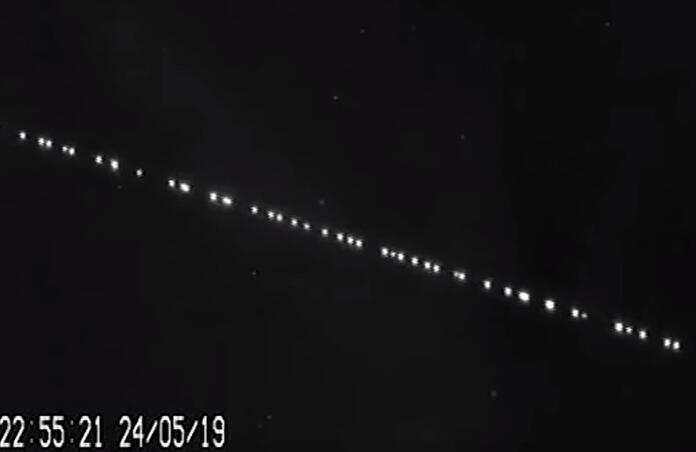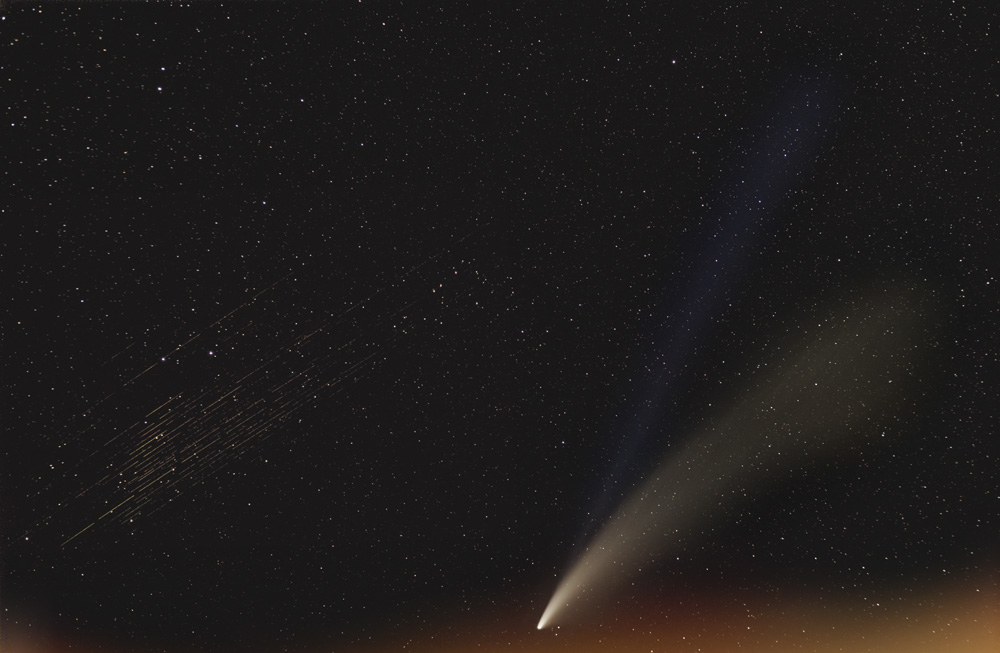From DarkSat to VisorSat and CubeSat

With the advent of space-based broadband and the increasing number of measurement instruments in orbit, the sky near Earth is getting crowded. The cover image shows astronomers’ worst fear become reality: satellite trails disrupting their ground-based observations.
SpaceX and Virgin Orbit, both private companies that have the capacity to launch satellites, are trying to reduce this source of light pollution with new generations of satellites. SpaceX had already attempted to paint its devices in black last spring (DarkSat), a strategy which failed to achieve its aims, as you can see below.

Since the 4th of June 2020, Starlink satellites have been equipped with a type of “sunshade”, that reduces the amount of sunlight reflected to Earth, hence the name “VisorSat”. Additionally, their on-board software was improved in order to orientate them so as to reflect the least light possible. This is necessary since they can be moved with an integrated krypton propeller, that enables them to raise or lower their orbit and manoeuvre in space, with the reflecting properties of their surfaces varying accordingly.

Data collected over the past few months regarding these satellite’s magnitudes reveals that VisorSats are on average only 31% as bright as the original Starlink satellites, suggesting that the two solutions put into place are an effective way of treating the problem of satellite light pollution. Still, the range of observed magnitudes is significant, which means that under dark skies some satellites may still disturb observations. For professional telescopes, sensitive to even lower magnitudes, needless to say that these improvements, although a good step forward, are insufficient, especially considering that the final Starlink constellation will contain over 40 000 satellites.
In collaboration with NASA and 9 US universities, Virgin Orbit successfully deployed ten small, cube-shaped satellites in mid-January. They are “nanosatellites”, because their size doesn’t exceed 1m20 by 1m20 by 1m20 and their weight less than 20kg – 10 times less than a Starlink satellite. They are mainly intended for research in diverse fields such as climate science, space radiation or microdebris collection, as well as for outreach and education. But nanosatellites are also developed for communication and broadband purposes, so that they are another option to reduce light pollution.
Virgin Orbit is committed to launching small satellites (of lower or similar weights to the SpaceX ones) for “everyone”, and their next order is s satellite for the Dutch ministry of Defence. What’s most interesting about them is that they don’t conduct launches with a rocket – they modified a Boeing 747, a standard passenger aeroplane, to carry a launcher to a high altitude from which the launcher gets released to reach the satellites’ orbit. This implies that less fuel is used, and more launches can be conducted, in the company’s terms it’s a “low-cost” solution.

More compact satellites, clever software and visors - thanks to Elon Musk and Richard Branson's engineers at SpaceX and Virgin Orbit respectively, progress is made towards both the companies' space-based broadband network ideal and astronomers' need for clear skies.
Cover Image: Starlink Satellite Trail, M. Langbroek 24/05/2019
Image credits:
1- Comet Neowise and Starlink Satellites, A. Carrozzi, 15/07/2020
2- VisorSat, SpaceX
3- LauncherOne, Virgin Orbit
